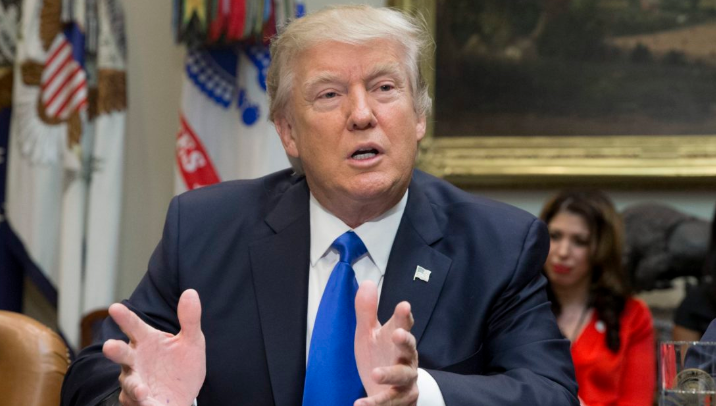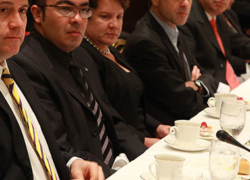Latin America Advisor
A Daily Publication of The Dialogue
What Would a Global Trade War Mean for Latin America?

U.S. President Donald Trump’s administration on June 1 put into effect tariffs on steel and aluminum from Mexico, Canada and the European Union. Officials from the targeted countries swiftly announced retaliatory measures. While some participants in the U.S. metals industry applauded the move, other sectors of the U.S. economy now targeted for retaliation expressed alarm. What effects will the tariffs have on the economies of the United States and the other countries involved? What is the likelihood of the tariffs being reversed soon? To what extent are the new U.S. tariffs justified?
Arturo Sarukhan, board member of the Inter-American Dialogue and former Mexican ambassador to the United States: "No one can claim to be surprised that President Trump now has the makings of the trade war he’s always wanted. We were all forewarned during the campaign, when in his major foreign policy speech he reiterated that the world had taken advantage of the United States, that he’d make the United States a less ‘predictable’ nation and articulated a Sinatra Doctrine of my way, or the highway. But to argue that Canada and Mexico are threats to national security in order to impose tariffs is a slap in the face of two countries that have watched the United States’ back since 9/11, and, in the case of Canada (even more gallingly), a military and NATO ally. This is how trade wars escalate, and the administration’s reckless decision to impose tariffs has opened up various fronts. First, it will cause unnecessary economic pain to farmers, manufacturers and consumers across the United States. It’s no secret that—like what we did in 2009 to force American compliance with a WTO ruling on Mexican trucks entering the United States— the rationale behind Mexico’s countervailing duties is: a) inflict political pain and costs on pro-Trump states and districts; b) ensure that U.S. actors that pushed for the tariffs bear the brunt of reprisals; and c) avoid disrupting Mexican supply chains, diverting imports away from the United States and toward Canada and the European Union. Second, the prospects for a NAFTA deal have been severely hampered, making the renegotiation more challenging, though not impossible. And third, Trump’s disdain for multilateral deals and his willingness to enact aggressive tariffs raise concerns that the WTO could become collateral damage. It’s time for free-trading Republicans to stand up to Trump on tariffs—and for Democrats to stand with them. Absent that, and paraphrasing Yoda in the Star Wars saga, begun, the trade war has."
Thomas Gibson, president and CEO of the American Iron and Steel Institute: "Nearly 38 million tons of steel were imported into the United States last year. That’s more than 100,000 tons a day. The Organization for Economic Cooperation and Development recently estimated that there is nearly 600 million tons of overcapacity in the world. The massive global overcapacity in steel continues to cause this surge in imports. This steel glut is fueled by China and other countries subsidizing their steel production. As a result, they produce vast amounts of steel that is unused in their domestic markets and then dumped all around the world. In many cases, imports include steel that originates in China, which is shipped to third countries for further processing before it is exported to the United States. The steel industry has addressed a number of these import issues through traditional trade cases brought against specific steel products from specific countries. But as soon as the industry wins a trade case, imports of that product shift to another country. In the process, American production, investment and jobs are displaced. Which is why the U.S. producers of AISI fully support the Trump administration’s position that any country that is granted an exemption from the tariffs must be subject to a quota, in order to safeguard against the exempt country becoming a conduit for trade diversion, transshipment and import surges. The president wants the industry to achieve 80 percent or more capacity utilization over the long-term. We wholeheartedly agree. We believe the NAFTA discussions should continue as they can be a basis for ensuring use of more NAFTA steel while achieving the objectives of the Section 232 remedies."
Ray Walser, retired foreign service officer: "Achieving a return to ‘American Greatness’ requires, claims President Trump, a dramatic revision of disadvantageous trade deals. The president maintains that winning trade wars is easy while maneuvering to become the most protectionist president since Herbert Hoover. From the swift withdrawal from the Trans-Pacific Partnership to contentious NAFTA renegotiations and the latest tariff measures on steel and aluminum imports on national security grounds, U.S. trade policy decision-making appears to be increasingly controlled by the president’s team of zero-sum economic nationalists. Imposition of steel tariffs will affect trade in the Americas. Although the United States produces approximately 75 percent of the steel it consumes, it is also the world’s largest importer. Roughly 40 percent of steel imports come from Canada, Brazil and Mexico. Most knowledgeable trade experts predict the purported benefits in new jobs and a reduced trade deficit will be more than offset by job loss and higher prices in downstream industries and damage to U.S. competitiveness. What is good for U.S. Steel is not necessarily good for John Deere and Caterpillar. Picking economic winners and losers is not a job best entrusted to Washington politicians. Close trade partners are already examining retaliatory measures. G7 ministers stated forcefully that U.S. actions ‘undermine open trade and confidence in the global economy.’ Canadian officials consider absurd the claim their steel exports threaten U.S. national security. Overall, many see a U.S. trade policy, shaped by nostalgia and myopia, as another indication of presidential readiness to abandon global leadership on the trade for a potentially illusory better deal. How far that abandonment will go depends on a White House that changes with the political and economic winds. Just think of ‘Little Rocket Man,’ ‘fire and fury’ and the upcoming Singapore summit with North Korea’s Kim Jong-un."
Tori Whiting, Jay Van Andel Trade Economist at the The Heritage Foundation’s Institute for Economic Freedom: "The Trump administration has advanced many sound, sustainable economic policies that have offered the American people opportunities for prosperity and set the U.S. economy on the path to robust growth. That is why it is frustrating the administration would impose counterproductive tariffs on Canada, Mexico, the European Union and other key U.S allies. For more than two months, American manufacturers have endured higher prices, with domestic steel prices spiking by as much as 40 percent in just a few months. Citing Colorado-based Qualtek Manufacturing CEO Troy Roberts, the Associated Press reported that ‘rising steel and aluminum prices have already driven the annual cost of [the] company’s key products by $300,000, jeopardizing plans to add 14 jobs to [its] 74-employee staff. It’s also delaying shipments.’ Companies large and small are experiencing struggles like Qualtek as a result of the tariffs on steel and aluminum. The recent inclusion of Canada, Mexico and the European Union will only exacerbate these negative effects. The last time the United States imposed tariffs like this, 200,000 American workers lost their jobs. This time will be no different. Recent analysis estimates that five jobs could be lost for every one gained as a result of these tariffs, amounting to as many as 146,000 net jobs lost. The effect on jobs could be greater if U.S. allies choose to retaliate. Rather than promoting self-defeating trade policies, the White House should focus on making tax cuts permanent, cutting wasteful government spending, and removing burdensome regulations for businesses."
The Latin America Advisor features Q&A with leaders in politics, economics, and finance every business day. The publication is available to members of the Dialogue's Corporate Program and others by subscription.



















